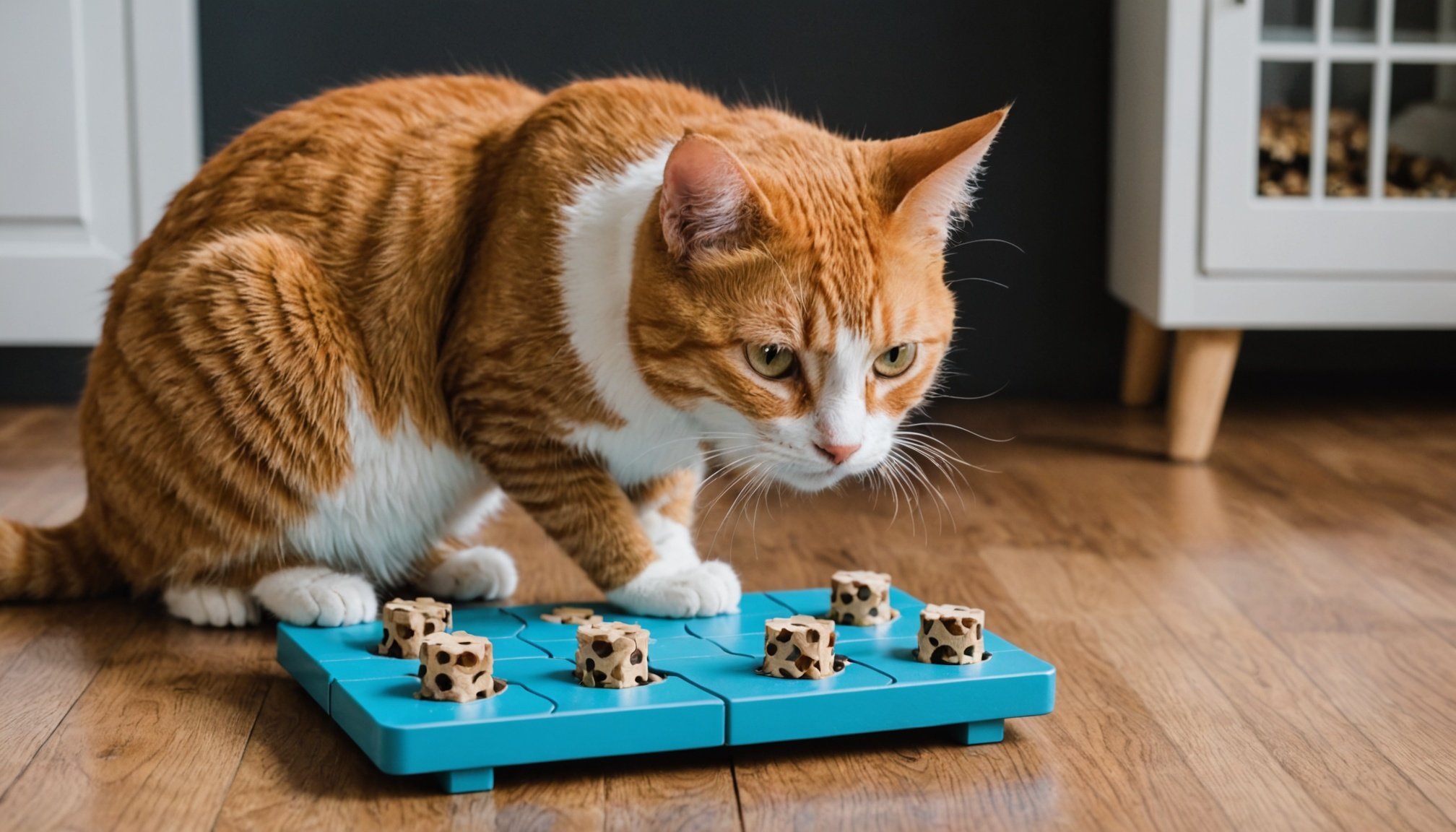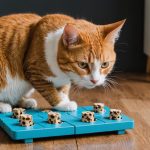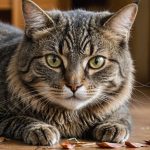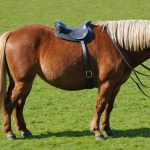Materials Needed for Your DIY Puzzle Feeder
Crafting a DIY cat feeder does not need to be overly complex or expensive. To create a bespoke puzzle feeder, certain fundamental materials are necessary. Wood serves as a sturdy foundation, offering robustness to the structure. A drill and screws are essential for assembly, ensuring that all components are securely fastened. For aesthetic purposes, paint can be applied, preferably one that is safe and non-toxic to safeguard your pet’s health.
When selecting materials, consider opting for those that are environmentally friendly and budget-conscious. For instance, reclaimed wood offers a sustainable alternative to new timber. Additionally, seek out supplies for cat puzzle feeder crafting, such as recycled or secondhand components, to reduce environmental footprint while also being cost-effective. These options are not only kind to your wallet but are also considerate of the planet.
A lire également : Enhance your indoor cat”s natural hunting abilities: proven strategies for better health and joy
It is crucial to prioritise safety when choosing materials. Ensure that any finishes or adhesives used are non-toxic and suitable for pets. This consideration prevents any potential harm if the feeder is chewed or licked by your feline friend. By adhering to these guidelines, you can efficiently build a safe, functional, and eco-friendly puzzle feeder for your cat.
Step-by-Step Construction Instructions
Building a cat puzzle feeder can be a delightful project that combines creativity with practicality. This guide will walk you through crafting your DIY feeder, ensuring a rewarding experience for both you and your feline friend.
A lire également : Ultimate cat care: your essential guide to tracking feline breathing and identifying respiratory problems at home
Preparing the Base
When you begin to build a cat puzzle feeder, the base forms the foundation. Consider base dimensions that suit your space—common shapes include rectangles and circles. Precision is critical here. Use a tape measure to accurately sketch your chosen shape onto a sturdy piece of wood or plastic. Once marked, use a saw for clean and precise cuts to ensure the feeder stands stable.
Aligning your materials and rechecking measurements before cutting will save time and reduce errors, especially if you are new to DIY projects.
Assembling the Feeder
Now, onto assembling the feeder. Remember, each piece needs to fit securely to prevent any hazards. Start by attaching the previously cut base to side panels using screws or adhesive suitable for your materials. Visuals can guide proper alignment; if available, refer to diagrams or photos from similar DIY feeder instructions. Ensuring fixtures are tight is crucial for your pet’s safety.
Adding Puzzle Elements
Enhance your DIY feeder with puzzle elements. Think of sliding compartments, rotating sections, or different sized holes. Variations keep cats engaged, providing mental stimulation while feeding. Changing puzzle elements occasionally adds excitement and keeps the feeder fresh for your pet.
Customization Tips for Engagement
Engaging your feline friend with a customized puzzle feeder can be a fun and rewarding experience. By customizing cat puzzle feeders, you can not only keep them mentally stimulated but also seamlessly integrate the feeder with your home decor. Consider painting or decorating the feeder to match your home’s aesthetic. This personal touch can make the feeder a charming component of your living space, while also maintaining its functionality.
To better enhance cat playtime, tailor the challenges of the feeder based on your cat’s skill level. Begin by observing their problem-solving abilities; if they’re new to puzzle feeders, start with simpler tasks. Gradually increase the difficulty to maintain engagement and interest. This progression ensures your cat remains intrigued and stretched cognitively.
Adding scent enrichment is another effective way to boost the feeder’s appeal. You could sprinkle a small amount of dried catnip inside, or rub a bit of tuna juice on the feeder’s exterior. This encourages your cat to explore their senses, making the feeding process more stimulating and enjoyable. These small adjustments can significantly elevate your cat’s playtime experience, ensuring that mealtime becomes a sought-after ritual.
Benefits of Using a Puzzle Feeder
Puzzle feeders are ingenious tools that offer mental stimulation for cats, helping alleviate boredom. By challenging them to work for their food, these feeders engage a cat’s natural hunting instincts. This process not only keeps them entertained but also sharpens their cognitive functions. As they maneuver the feeder to access treats, cats experience rewarding interaction with their environment, leading to a happier, more satisfied pet.
One of the significant benefits of puzzle feeders is their contribution to physical health. By controlling the speed and amount of food consumed, these feeders aid in weight management. Overeating can be a concern for indoor cats, leading to obesity-related health issues. By encouraging gradual consumption, puzzle feeders help maintain a healthy weight, supporting a cat’s overall well-being.
Behaviorally, cats show noticeable improvements with regular use of puzzle feeders. They can reduce anxiety and destructive behaviours by providing an outlet for their energy and curiosity. This stimulation can decrease tendencies towards aggression or excessive vocalisation caused by boredom. Additionally, feeding time becomes a learning opportunity, enhancing their problem-solving abilities.
By incorporating puzzle feeders into a cat’s routine, owners observe a more balanced and lively companion, enjoying mental and physical enrichment.
Safety Considerations
Creating a cat feeder by yourself can be a rewarding project, but safety should always come first. DIY projects might seem straightforward, yet they often come with hidden dangers. For instance, loose parts or small components in your DIY cat feeder can pose choking hazards to your pet. To counteract this, ensure that all parts are firmly secured and choose materials that are non-toxic and pet-friendly.
Monitoring your cat’s interaction with the feeder is equally crucial. Cats are naturally curious creatures and may tamper with the feeder unexpectedly. Observing your cat during initial uses can provide insights into any adjustments necessary to maintain safety.
Regular checks for wear and tear of your cat feeder are essential to ensure continued safety. Even the most robust constructions can degrade over time. Periodically inspect the feeder for any loose or damaged parts and repair them promptly to avoid accidents.
Engaging in safe crafting for pets not only guarantees the well-being of your furry friend but also extends the longevity and functionality of the feeder. This proactive approach ensures your cat can enjoy their meals with minimal risk. Always prioritise safety when embarking on crafting projects for pets.
Maintenance Tips for Longevity
Regular maintenance is vital to ensure your automatic cat feeder works effectively for years to come. By following some cleaning instructions and repair tips, you can keep it in top shape.
One important aspect of maintaining cat feeders is keeping them hygienic. Start by regularly disassembling the feeder to clean each part thoroughly. Use warm soapy water and a soft brush to remove food residue that may accumulate over time. Ensure all parts are completely dry before reassembly to prevent mould growth.
Over time, you might need to conduct some DIY feeder care. If your feeder starts malfunctioning, check for any loose connections or worn out parts. Replacing damaged components like motors or sensors can breathe new life into the feeder, postponing the need for a complete replacement.
As your cat matures, you may need to adjust meal difficulty or other features to suit its needs. Some feeders come with adjustable settings that allow you to change the portion size or feeding frequency easily. Familiarise yourself with these functions to keep your cat satisfied and healthy.
Keep an eye on your feeder’s components and make timely adjustments. This approach will contribute significantly to the feeder’s longevity and ensure your pet’s mealtime remains seamless.











